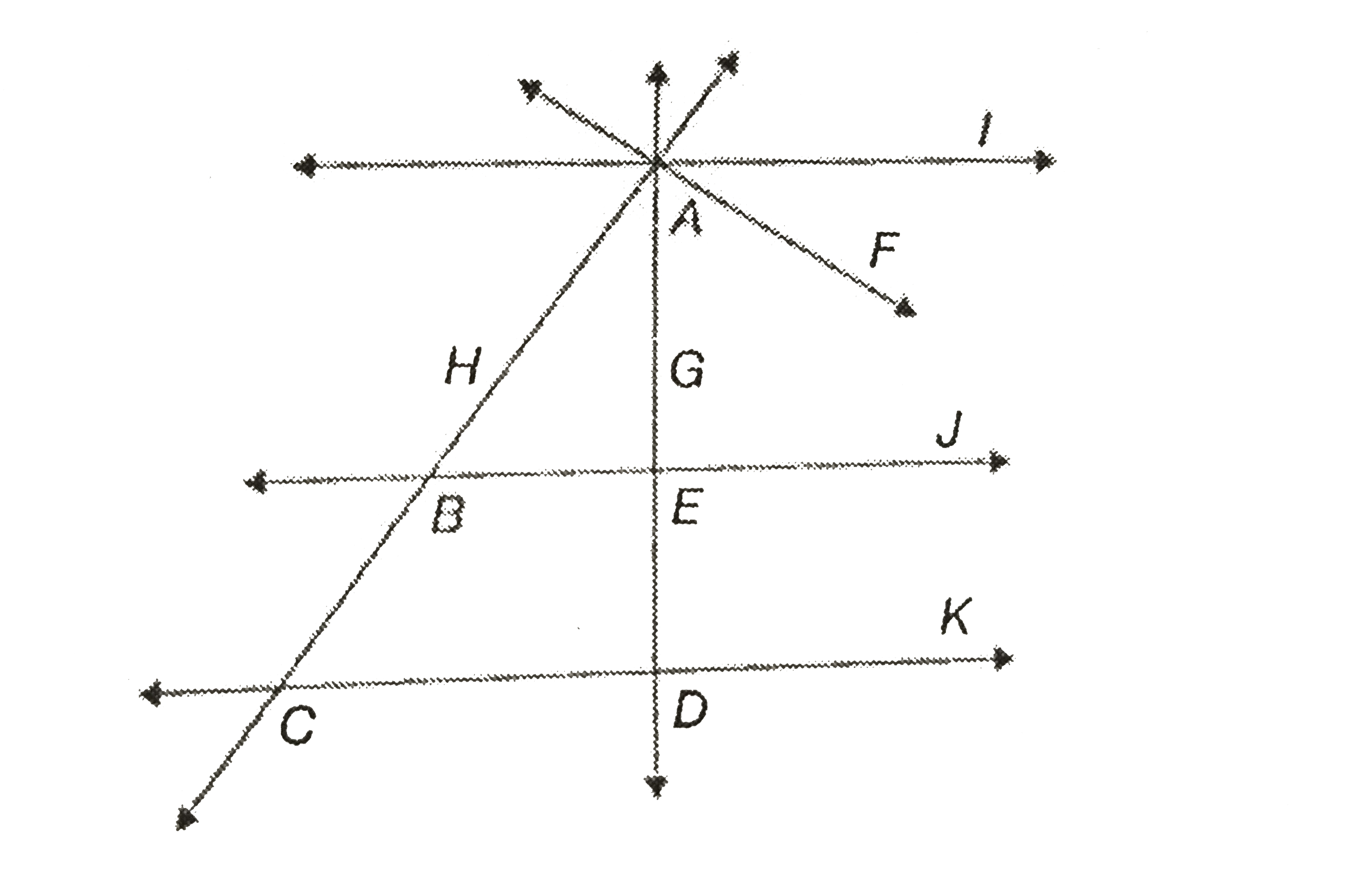Given the linear equation 2x+3y−8=0 , write another linear equation in two variables such that the geometrical representation of the pair so formed is (i) intersecting lines (ii) Parallel lines (iii) coincident lines
To solve the given problem, we will derive three different linear equations based on the conditions provided for intersecting lines, parallel lines, and coincident lines with respect to the given equation 2x+3y−8=0.
Given Equation:
1. Equation 1: 2x+3y−8=0
(i) Intersecting Lines
For two lines to intersect, the condition is:
a1a2≠b1b2
Where a1=2, b1=3 from the given equation. We can choose a2 and b2 such that the ratios are not equal.
Let's take:
- a2=3
- b2=4
Now, we check:
a1a2=23,b1b2=34
Since 23≠34, the lines will intersect.
Now we can choose any constant c2. Let's take c2=5:
- c1=−8
Thus, the second equation becomes:
3x+4y+5=0
(ii) Parallel Lines
For two lines to be parallel, the condition is:
a1a2=b1b2≠c1c2
Let’s choose:
- a2=4
- b2=6
Now, we check:
a1a2=24=12,b1b2=36=12
Since both ratios are equal, we need to ensure c1 and c2 are not equal in ratio.
Let’s take c2=1:
Now we check:
c1c2=−81=−8(not equal to 12)
Thus, the second equation becomes:
4x+6y+1=0
(iii) Coincident Lines
For two lines to be coincident, the condition is:
a1a2=b1b2=c1c2
Let’s choose:
- a2=4
- b2=6
We already have:
a1a2=24=12,b1b2=36=12
Now, we need c2 such that:
c1c2=−8c2=12
This implies:
−8=12c2⟹c2=−16
Thus, the second equation becomes:
4x+6y−16=0
Summary of the Equations
1. Intersecting Lines: 3x+4y+5=0
2. Parallel Lines: 4x+6y+1=0
3. Coincident Lines: 4x+6y−16=0
1. Equation 1: 2x+3y−8=0
For two lines to intersect, the condition is:
a1a2≠b1b2
Where a1=2, b1=3 from the given equation. We can choose a2 and b2 such that the ratios are not equal.
- a2=3
- b2=4
a1a2=23,b1b2=34
Since 23≠34, the lines will intersect.
- c1=−8
3x+4y+5=0
For two lines to be parallel, the condition is:
a1a2=b1b2≠c1c2
- a2=4
- b2=6
a1a2=24=12,b1b2=36=12
Since both ratios are equal, we need to ensure c1 and c2 are not equal in ratio.
Now we check:
c1c2=−81=−8(not equal to 12)
4x+6y+1=0
For two lines to be coincident, the condition is:
a1a2=b1b2=c1c2
- a2=4
- b2=6
a1a2=24=12,b1b2=36=12
c1c2=−8c2=12
This implies:
−8=12c2⟹c2=−16
4x+6y−16=0
1. Intersecting Lines: 3x+4y+5=0
2. Parallel Lines: 4x+6y+1=0
3. Coincident Lines: 4x+6y−16=0
Topper's Solved these Questions
Similar Questions
Given the linear equation 2x+3y−8=0, write another linear equation in two variables such that the geometrical representation of the pair so formed is
coincident lines
View SolutionGiven the linear equation 3x−2y+7=0, write another linear equation in two variables such that the geometrical representation of the pair so formed is
(i)intersecting lines
(ii) parallel lines
(iii) coincident lines
View SolutionGiven the linear equation 2x+3y8=0, write another linear equation in two variables such that the geometrical representation of the pair so formed is:(i) intersecting lines (ii) parallel lines (iii) coincident lines
View SolutionGiven that linear equation 3x+4y=9. Write another linear equation in these two variables such that the geometrical represention of the pair so formed is
intersecting lines
View SolutionGiven that linear equation 3x+4y=9. Write another linear equation in these two variables such that the geometrical represention of the pair so formed is
coincident lines
View SolutionGiven the linear equation 2x+3y–12=0, write another linear equation in these variables, such that. geometrical representation of the pair so formed is
(i) Parallel Lines (ii) Coincident Lines
View SolutionFrom the following figure, identify,
(i) Pairs of intersecting lines
(ii) Parallel lines
(iii) Concurrent lines

View SolutionBy using x and y as a variable , write two linear equations in two variables.
View SolutionThe graph of every linear equation in two variables need not be a line.
View SolutionGive the geometrical representation of 2x+5=0 as a linear equation in
two variables
View Solution

